How to Use Deadlift Straps: A Step-By-Step Guide
Author:
Reviewed by:
(Certified Nutritionist, S&C specialist, M.Sc.Eng. Biotechnology)
Unlock your full potential by engaging with our experts and community! Have questions about your fitness journey or looking for expert advice on weightlifting techniques? Don’t hesitate — leave a comment below and Ihor Shymechko will provide a personalized answer and insights to help you reach your goals.
Torokhtiy is reader-supported. Some links are affiliate links, and we may earn a commission at no extra cost to you. See our disclosure page for details.
Imagine deadlifting without having to worry about your grip. Sounds satisfying, right? Protecting your wrist should be a priority before lifting that heavy weight and that’s completely possible with the help of deadlift straps. If you’re looking for a guide on how to use deadlift straps, this article is for you.
How to use straps for a deadlift? Just slip one end of the strap through the other to create a loop and slip your hand there, adjusting until the loop is tight and putting the strap on to your other hand. Then, loop the strap’s hanging end around the bar about 2-3x.
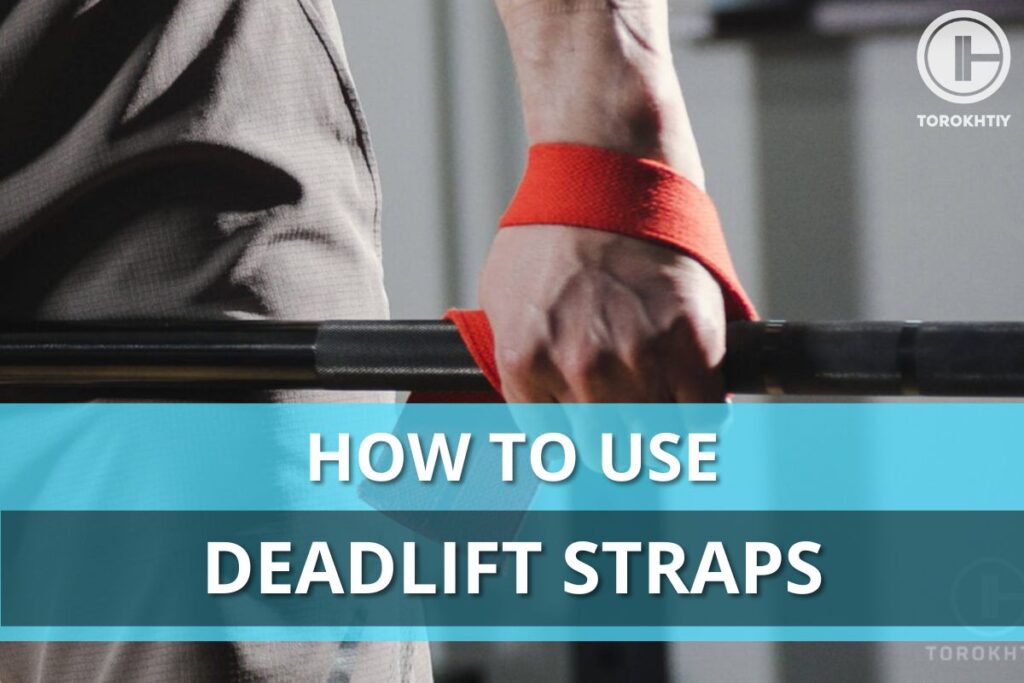
What are lifting straps?
Lifting straps, also referred to as wrist straps, are basically pieces of cotton, nylon, or leather sewn together and wrapped around the wrist and the bar. These are exceptionally useful during deadlifts or heavy pulling exercises.
Once you find yourself in the world of power sports and weightlifting, chances are high that you’ve already seen one of these long straps hanging from the weightlifter’s wrist in between reps.
Before going into that deadlift, you’ll most likely notice that brief dancing motion lifters do. This is actually these guys attaching and securing the deadlift strap to the barbell. Once the straps are tight enough, the lifter prepares, and moves the weight almost effortlessly – thanks to the mighty deadlift straps!
Why do you need straps for deadlift?
I can think of multiple reasons why you should definitely use deadlift straps. For one, a failing grip can hinder the maximum potential of your lift. Wrist straps allow you to train and fatigue your muscles without having to worry about your grip giving up prematurely.
This means that these straps allow you to lift the maximum weights without losing your grip. Some people call this cheating, but really, who wants stunted progress just because of grip failure? Well, definitely not me!
More often than not, powerlifters fail to reach their truest muscular failure because their grip starts to break. While others argue that straps aren’t allowed in big competitions, best believe that even the best ones in the game use these during their training.
Deadlift straps do not only make your current training efficient but also allowing you to keep lifting even when your grip starts to fail. For the massive benefit these little guys can provide, there’s really no reason why you shouldn’t put on deadlift straps.

How to use straps for a deadlift?
To use the straps, slip one end of the strap through the other to create a loop, then slide your hand through the loop and tighten it around your wrist. Wrap the loose end around the bar 1-3 times, and repeat with the other hand. Tighten it by rotating your grip.
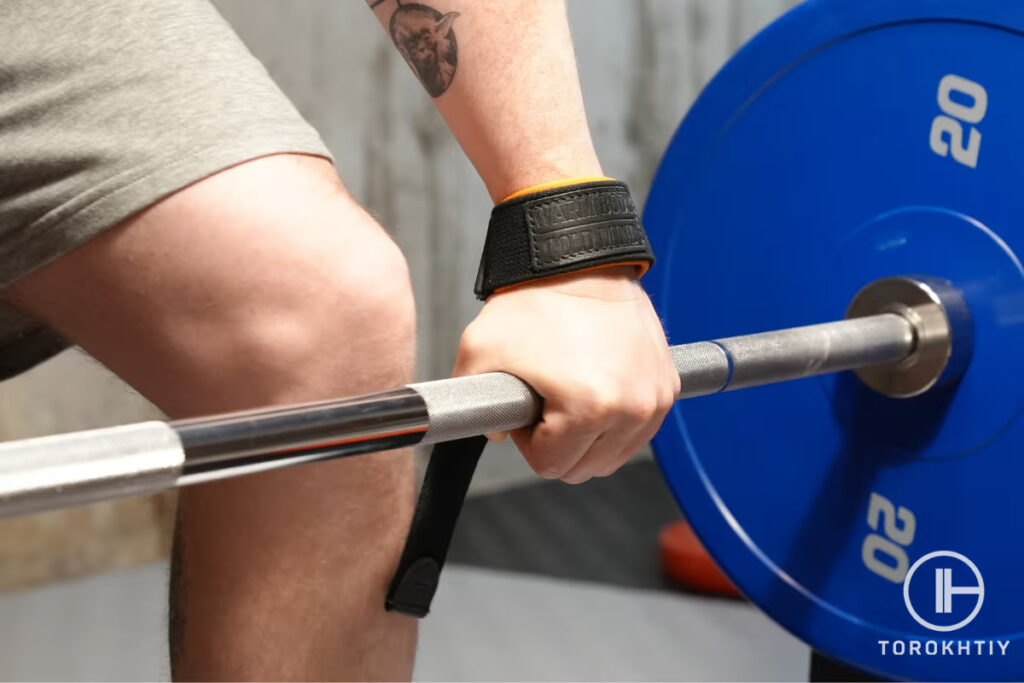
Now, allow me to give you a run-down on how to securely use these deadlift straps.
1. Create a Loop
Slip one end of the strap through the hole in the end to form a loop. Make sure that about 10 inches of the strap is fed through.
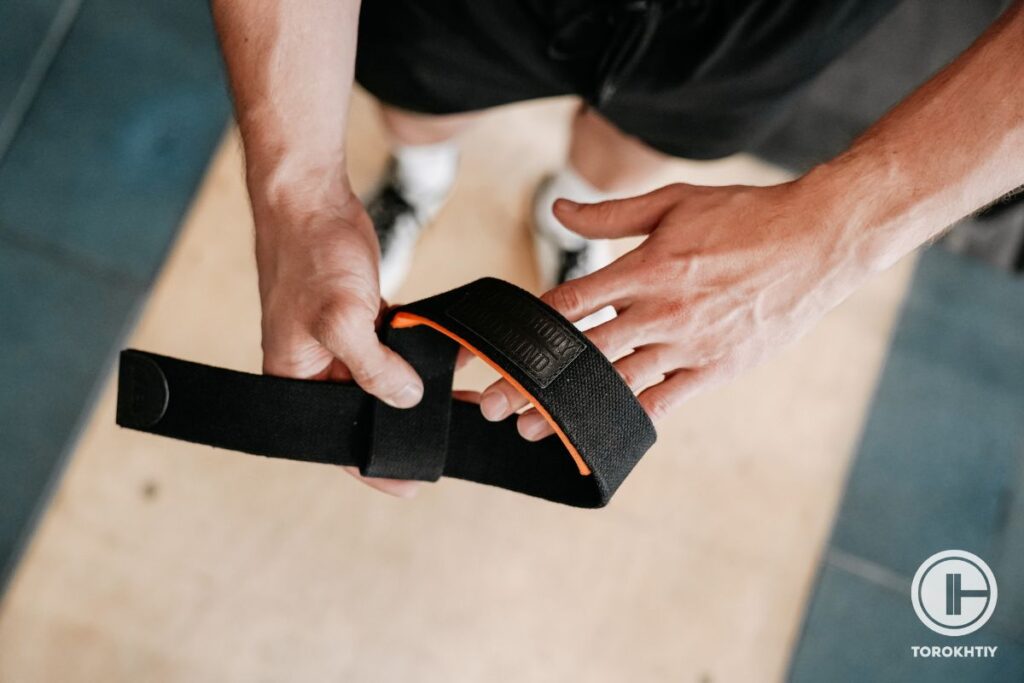
2. Put Your Hand In and Adjust
Slip your hand through the loop and align the loose strap with your thumb. Tighten the loop around the base of your hand. It should be snug, but not so much that it cuts off your circulation.
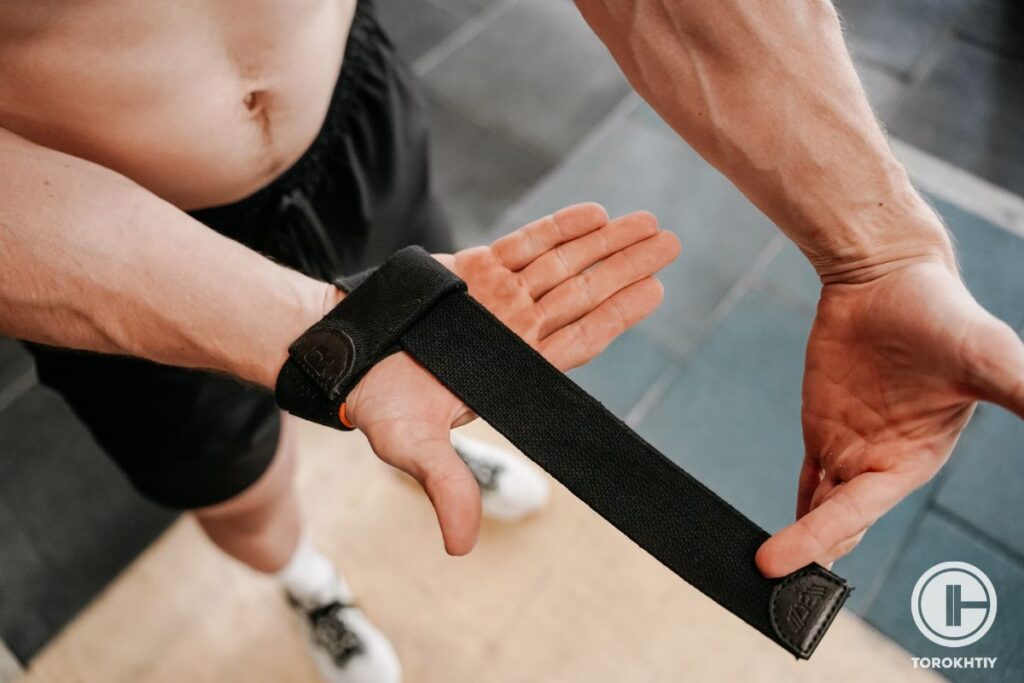
3. Wrap Around the Bar
With the strap in place, wrap the loose end around the bar 1-3 times, starting with your non-dominant hand. This allows you to use your dominant hand to adjust and tighten the strap.
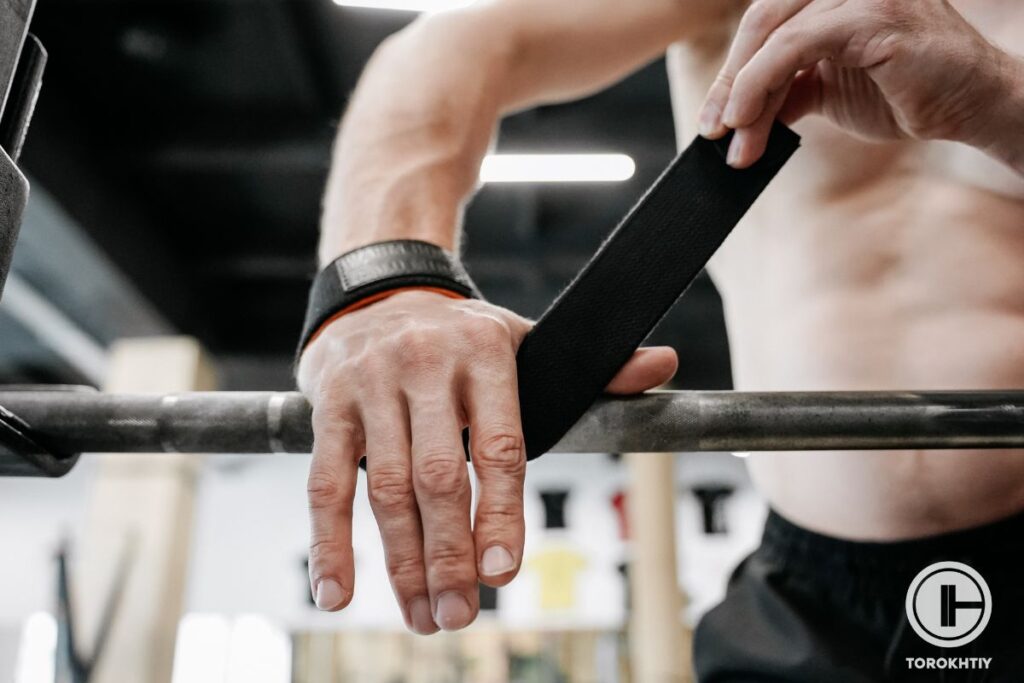
4. Adjust the Grip
Rotate bar and your grip on the bar to tighten the strap loops securely.. Both straps need to be equally tight and secure.
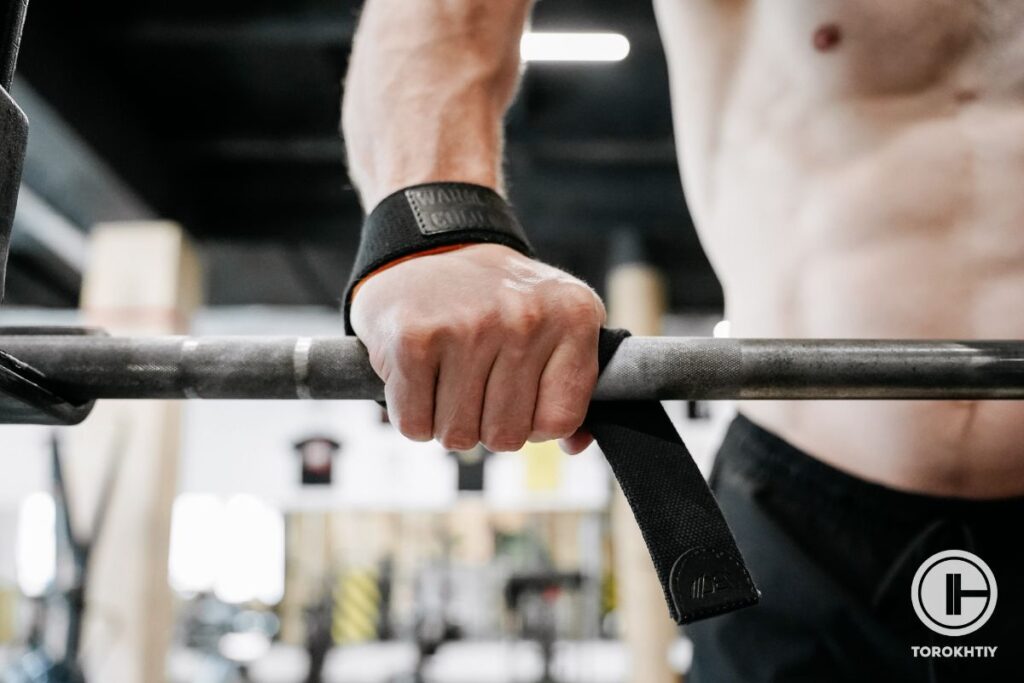
What to look for in deadlifting straps?
When looking for the best deadlift straps for you, you should be on the lookout for three crucial things: safety, comfort, and durability. For maximum safety, choose a heavy-duty wrist strap. Remember that your straps should be able to withstand heavy weights. Additionally, opt for padded deadlift straps for utmost comfort.
WARM BODY COLD MIND Lasso Lifting Wrist Straps
After trying multiple straps out there, we highly recommend Warm Body Cold Mind’s Lasso Lifting Wrist Straps. These straps can support you in progressing your lifts to their full potential, thanks to their sturdy build.
It is meticulously made of cotton, neoprene, and natural leather that will surely stand the test of time (and weights!). The wrist straps also come with neoprene padding, offering extreme comfort for your hands and wrists.
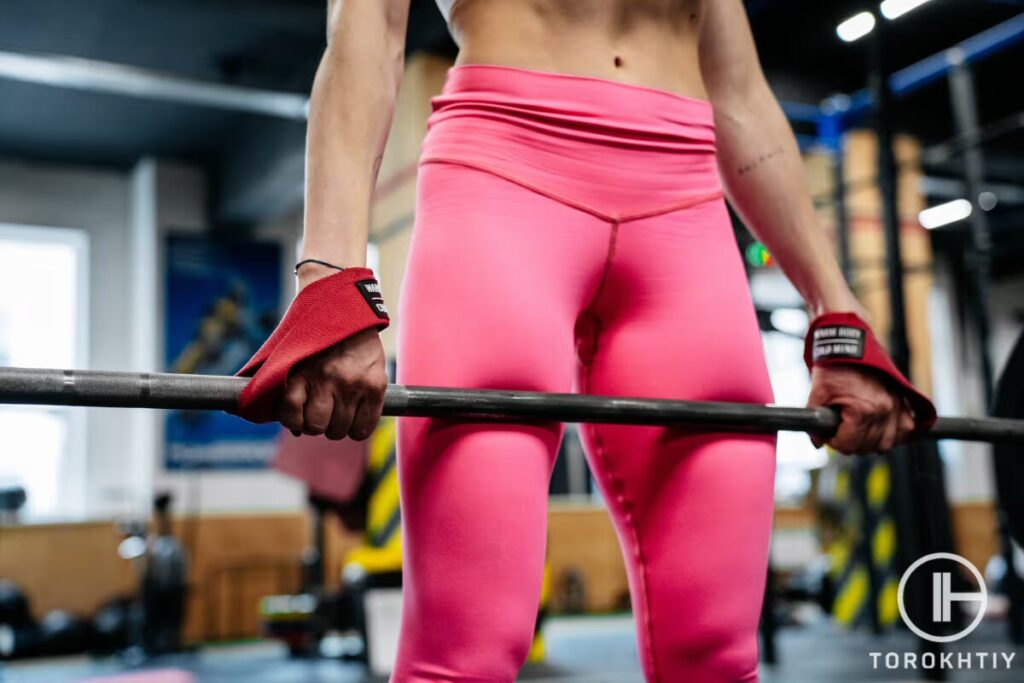
With these straps rated to hold out against up to a whopping 350kg of weights, you can focus entirely on your performance without the fear of the straps giving away. You can rest assured that you can boost your reps and load while eradicating the risk of any wrist and hand injuries.
What’s even better? Warm Body Cold Mind generously offers a 30-day full money-back guarantee to assure you of your money’s worth. Indeed, this deadlift strap is hands-down the best one we’ve tried to date.
FAQ
How much do straps add to a deadlift?
It will mainly depend on your grip strength and deadlift 1RM. In general you should expect improvements anywhere from 10 to 20% but it will highly depend on the individual with some folks falling out on both sides of this spectrum.
When should I start using straps?
It would be safe to wait at least 3 months of consistent lifting before using wrist straps. You should learn to execute the exercises properly and safely first prior to strapping. Developing solid grip strength is important for most exercises but also highly important in life, so make sure you are progressing with your grip strength as well.
Is using lifting straps cheating?
No, lifting with straps is definitely not cheating. In fact, even professional powerlifters and bodybuilders use straps in their training. Straps can help you challenge your lifting when grip is a limiting factor but also will help you target desired muscles better in the muscle building process.
Are lifting straps better than gloves?
First and foremost, lifting straps and gloves do not serve the same purpose. Wrist straps help you exhaust your muscles by decreasing any possible negative influence from your grip while gloves protect the hand from callouses. So to answer the question: no, gloves are not better than lifting straps simply because their benefits vary.
Conclusion
Using wrist straps for deadlift can tremendously boost the rate of your progress while ensuring your safety. By all means, use this guide in learning how to use deadlift straps safely. Remember, safety first!
Did we miss anything? If we did, feel free to share your thoughts and questions in the comment section below.
Also read:
- How to Use Figure 8 Straps
- Pull up Straps
- Lifting Hooks Vs Straps
- Lifting Grips Vs Straps
- Leather Vs Nylon Vs Cotton Lifting Straps
- Weightlifting Straps
- Deadlift Hook Grip
References:
- Kinematics and Kinetics of Multiple Sets Using Lifting Straps During Deadlift Training // Journal of Strength and Conditioning Research:
https://journals.lww.com/nsca-jscr/fulltext/2015/12000/Kinematics_and_Kinetics_of_Multiple_Sets_Using.18.aspx - Photos by Torokhtiy Media Team.
Why Trust Us?
With over 20 years in Olympic weightlifting, strength training, nutrition coaching, and general fitness our team does its best to provide the audience with ultimate support and meet the needs and requirements of advanced athletes and professional lifters, as well as people who strive to open new opportunities and develop their physical capabilities with us.
By trusting the recommendations of our certified experts in coaching, nutrition, and sports training programming, as well as scientific consultants, and physiotherapists, we provide you with thorough, well-considered, and scientifically proven content. All the information given in the articles concerning workout programming, separate exercises, and athletic performance, in general, is based on verified data.
The product testing process is described in more detail here.
Author: Ihor Shymechko
Pro Olympic Weightlifter, Coach
Best Results: Snatch – 208 kg,
C&J – 240 kg
Ihor has been a professional weightlifter since 1996, boasting over two decades of competition experience. His notable achievements include clinching the European Championship in 2009 and securing a silver medal in the 105kg division at the Senior World Championships in 2011. Ihor represented his country in the 2008, 2012, and 2016 Summer Olympics. After retiring from competitive weightlifting, he transitioned to coaching, leveraging his vast experience to guide athletes who now compete on both national and international stages.
Reviewed by: Jacek Szymanowski
Certified Nutritionist,
M.Sc.Eng. Biotechnology
Performance architect,
Strength and Conditioning Specialist
With over 30 years of fighting experience, specialization in nutrition coaching for athletes, and expertise in metabolic health and dietary strategies, Jacek offers a comprehensive approach to optimizing your performance and well-being. Backed by a Master of Science degree in Biotechnology, Jacek remains at the forefront of scientific advancements, ensuring that his coaching is always evidence-based and up-to-date.




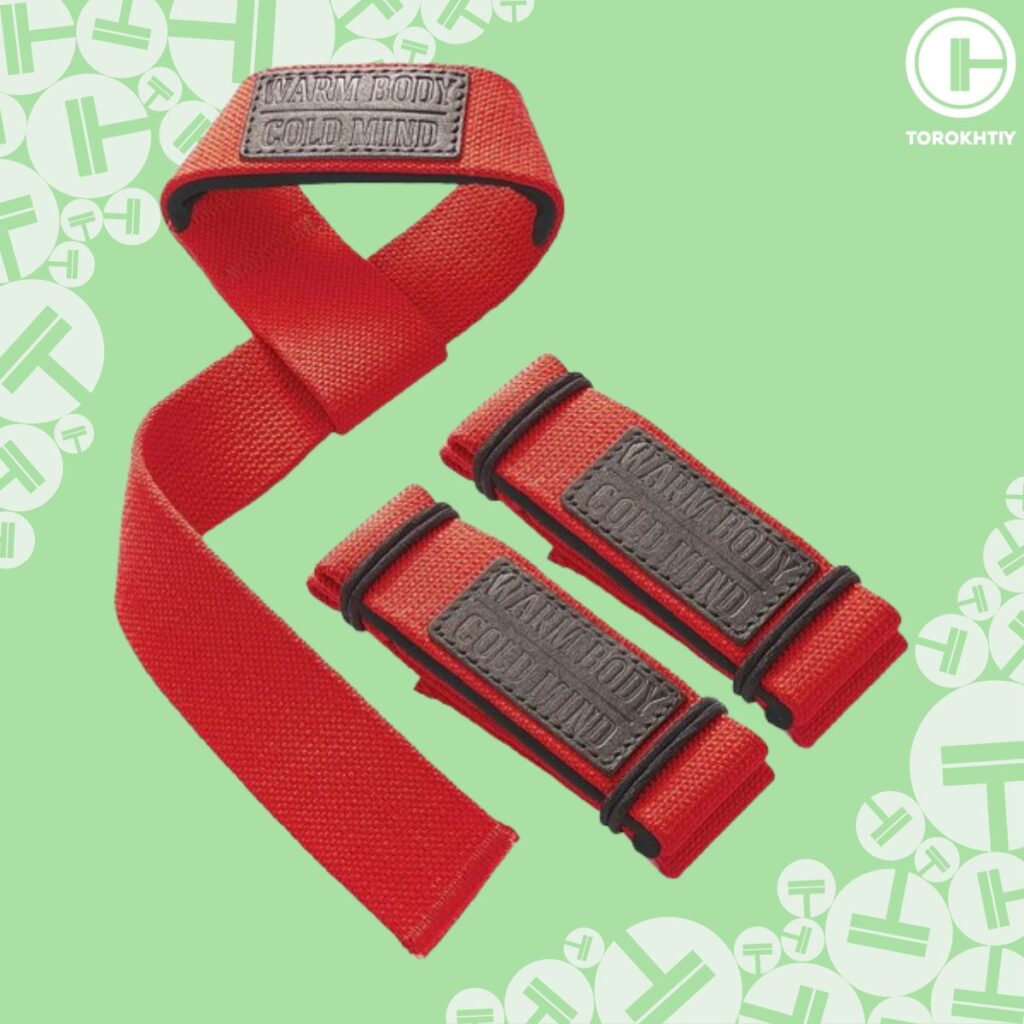
Still have questions after reading our article? Unlock your full potential by engaging with our experts and community! Don’t hesitate — leave a comment below and Ihor Shymechko will provide a personalized answer and insights to help you reach your goals.